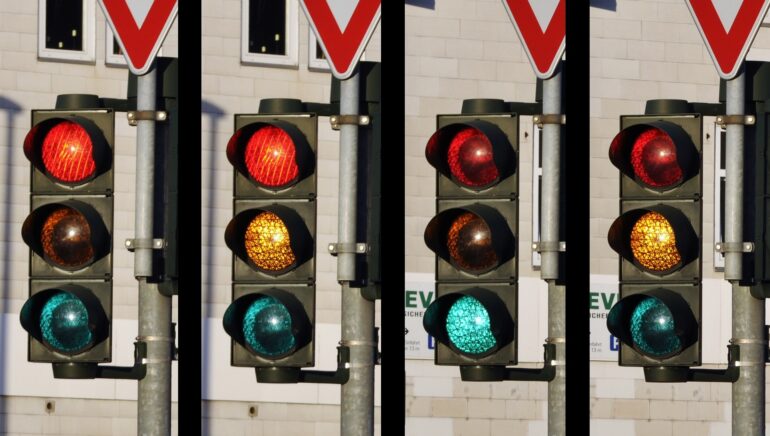TL;DR:
- Google’s AI is optimizing traffic signals in several global cities, reducing waiting times and emissions.
- The project, known as Project Green Light, has led to significant reductions in stops and emissions.
- Google is expanding its environmental initiatives, including fuel-efficient routing in Maps.
- Despite some criticism, Green Light’s simplicity and effectiveness make it a promising solution.
- Traffic authorities in Kolkata and other cities have successfully implemented Green Light recommendations.
Main AI News:
In urban centers across the globe, traffic congestion and stop-and-go driving at intersections have long been a source of frustration for drivers and an environmental concern. In Seattle, for instance, the average wait time at a red light is approximately 20 seconds, a seemingly insignificant duration that collectively contributes to over 1,000 metric tons of carbon dioxide emissions daily. However, the advent of Google’s innovative AI software is now reshaping the landscape, making traffic lights smarter and more efficient.
Google’s AI-driven initiative has extended its reach to a dozen cities on four continents, including Jakarta, Rio de Janeiro, and Hamburg. These cities are harnessing the power of Google Maps data and AI algorithms to optimize traffic signals, with the primary goal of reducing emissions from idling vehicles. The project’s initial phase has seen timing adjustments at 70 intersections, resulting in a remarkable reduction of up to 30 percent in stops and 10 percent in emissions for a staggering 30 million vehicles every month.
This transformative project is a part of Google’s broader commitment to environmental sustainability. The company is expanding its fuel-efficient routing feature in Maps to India and Indonesia, guiding drivers towards routes with less traffic and reduced fuel consumption. Additionally, Google is introducing flight-routing recommendations to air traffic controllers in Belgium, the Netherlands, Luxembourg, and northwest Germany, aimed at minimizing climate-warming contrails from aviation.
While Google’s Project Green Light has received positive reviews for its potential real-world impact, there are expectations of further developments and expansion to more cities in the near future. Guni Sharon, an assistant professor at Texas A&M University, suggests that more comprehensive AI and sensor systems capable of real-time adjustments to traffic conditions could be even more effective. Nevertheless, Google’s approach allows cities to work within their existing infrastructure, reducing the adoption barrier and risk.
Traffic authorities in Kolkata have already implemented changes suggested by Project Green Light at 13 intersections, earning praise from commuters. In some cases, the system serves as a valuable confirmation that the signal network is operating optimally. For instance, Transport for Greater Manchester in the UK has found that while many of Project Green Light’s recommendations may not apply to their unique situation, they provide essential insights into their signal network’s performance.
The concept of smarter traffic lights has long been a driver’s dream, but practical challenges such as technology costs and coordination difficulties have hindered progress. Google’s initiative stands out as it offers a free and straightforward solution, leveraging its extensive traffic data collected through Google Maps. The project aims to support larger cities with the infrastructure to control traffic signals remotely while proving its effectiveness across diverse conditions worldwide.
Through Google Maps data, the company can assess signal timings at thousands of intersections in each city, allowing AI algorithms to identify opportunities for optimization, primarily in urban areas. The recommendations range from minor adjustments to signal durations to more complex changes involving synchronization with neighboring lights. City engineers can access these recommendations through an online dashboard and swiftly implement them, thanks to Google’s computing prowess and data resources.
The significance of Google’s Project Green Light goes beyond just reducing waiting times at intersections; it offers a glimpse into the future of urban mobility and environmental stewardship. While real-time adjustments are not yet a reality for most cities due to infrastructure limitations, Google’s ongoing collaboration with traffic engineering experts worldwide aims to further refine and expand this transformative initiative.
Conclusion:
Google’s innovative AI technology is revolutionizing urban traffic management, reducing emissions, and enhancing the overall driving experience. As the project continues to evolve and expand, it holds the promise of making a substantial dent in global emissions while demonstrating the power of AI in addressing critical urban challenges.

